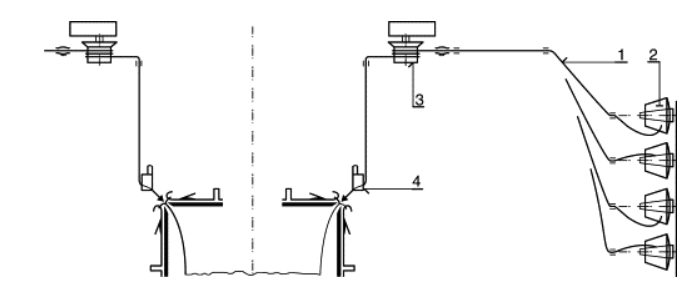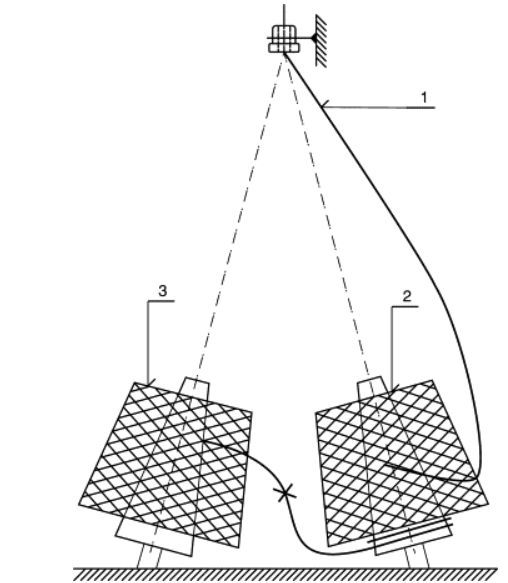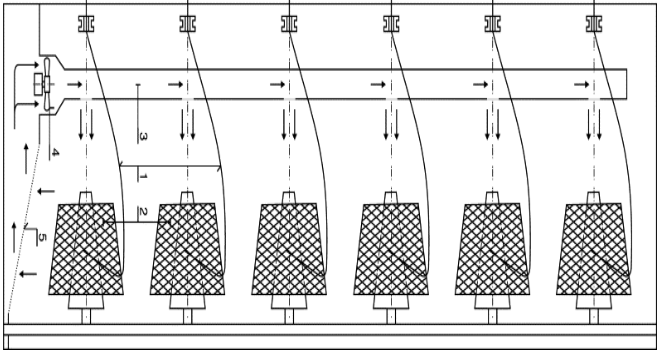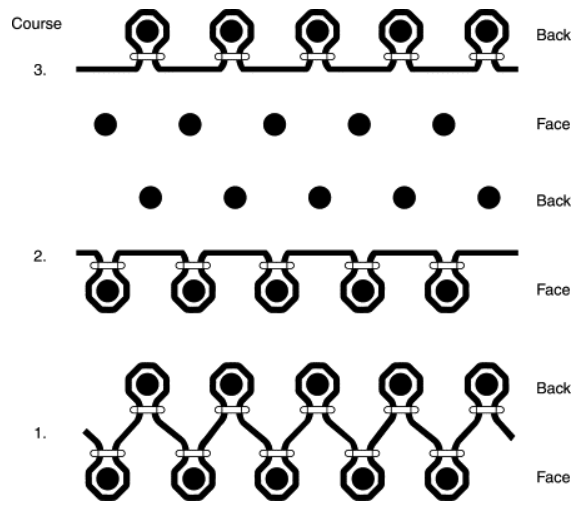Yarn storage and delivery systems on circular knitting machines
The specific features influencing yarn delivery on large-diameter circular knitting machines are high productivity, continuous knitting and a great number of simultaneously processed yarns. Some of these machines are equipped with a stripe (yarn guide exchange), but only a few enable reciprocated knitting. Small diameter hosiery knitting machines have up to four (or occasionally eight) knitting systems (feeders) and an important feature is the combination of rotary and reciprocal movement of the needle bed (beds). Between these extremes are the middle diameter machines for ‘body’ technologies.
Figure 2.1 shows the simplified yarn supply system on a large-diameter circular knitting machine. Yarns (1) are brought from the bobbins (2), passed through the side creel to the feeder (3) and finally to the yarn guide (4). Usually the feeder (3) is equipped with stop-motion sensors for yarn checking.
The creel of the knitting machine controls the placement of yarn packages (bobbins) on all machines. Modern large-diameter circular machines use separate side creels, which are able to hold a large number of packages in a vertical position. Floor projection of these creels may differ (oblong, circular, etc.). If there is a long distance between the bobbin and the yarn guide, the yarns may be threaded pneumatically into tubes. The modular design facilitates the changing of the number of bobbins where required. Small diameter circular knitting machines with a smaller number of cam systems use either side creels or creels designed as integral to the machine.
Modern creels make it possible to use double bobbins. Each pair of creel pins is centred on one thread eye (Fig. 2.2). The yarn of a new bobbin (3) may be linked to the end of the previous length of yarn (1) on bobbin (2) without stopping the machine. Some of the creels are equipped with systems for blowing off dust (fan creel), or with air circulation and filtration (filter creel). The example in Fig. 2.3shows the bobbins (2) in six rows, closed in a box with internal air circulation, provided by fans (4) and tubes (3). A filter (5) clears dust from the air. The creel can be air-conditioned. When the machine is not equipped with a stripe, this can be supplied by yarn exchange on the creel; some systems enable the knots to be positioned in the optimal area of the fabric.
Yarn length control (positive feeding), when not used for patterned fabric knitting, must enable different yarn lengths to be fed into courses in different structures. As an example, in Milano-rib knit there is one double-side course (1) and two single-side(2), (3) courses in the repeated pattern (see Fig. 2.4). As a double-faced course contains twice as many stitches, the yarns must be fed at approximately twice the length per machine revolution. This is the reason why these feeders use several belts, individually adjusted for speed, whilst feeders using yarns of the same length are controlled by one belt. The feeders are usually mounted onto two or three rings around the machine. If a configuration with two belts on each ring is used , yarns can be fed simultaneously at four or six speeds.
Post time: Feb-04-2023




